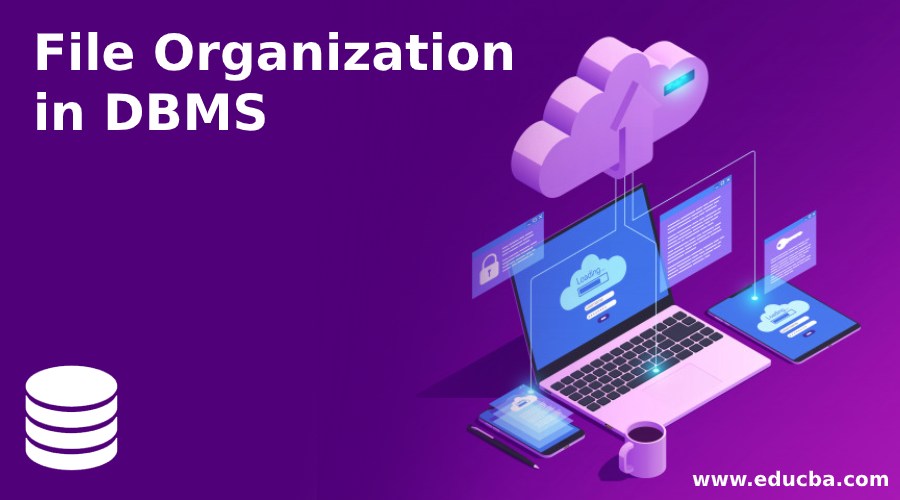Updated February 28, 2023
Introduction of File Organization in DBMS
The database, as we have already seen, contains tables, views, indexes, procedures, functions, etc. Tables and views are the logical way to look at the results. Nonetheless, the real information is preserved in physical memory. The database is a massive storage system and it has a lot of details and is also in physical storage facilities. Such data cannot be stored because it is on physical memory cards. They have been transformed into binary. There are several blocks of data in each memory unit, each of them being able to store certain quantities of data.
The data and blocks are mapped into a database to store the data. Every user who wishes to access or change these data will only fire the SQL query and obtain the results in the window. However, any such query will produce results as quickly as possible. But how is the physical memory captured with these data? If we ask for questions, do you think that merely storing data in memory devices give us better results? Of course not. How it is saved to your memory, method of access, query type, etc. affects the results. Therefore, it is an important matter to remember how to arrange the data in the database and hence the memory.
Types of File Organization in DBMS
We have plenty of data in a database. Each data is divided into groups known as tables. There are plenty of similar records for each table. Such records are displayed in tables on the screen to every user. However, these documents are stored in memory as files.
Generally, all table records are stored in one file. As we have seen above, it is not that straightforward to access the file contents – the actual documents. They are not stored there as tables and our SQL queries are not running. We need some methods of entry. We must store these data in a certain order to access these files so that it is easy to retrieve the information. This is the same as book indexes or library catalogs and helps us recognize the subjects or books we need. It is therefore up to the programmer, according to his needs, to select the most suitable file organization.
- B+ Tree File Organization
- Indexed Sequential Access Method
- Hash File Organization
- Clustered File Organization
Types of representing the records. Two different types of describing the documents are available in the file organization:
- Variable-length records
- Fixed-length records
1. Fixed-Length Records
Records with the specified length indicate the length set and the records are stored in the register. If the size of the record exceeds the set size, it is broken down into more than one row.
The following two problems arise because of the fixed size:
- Partial storage in more than one block of subparts of the record requires access to all the blocks containing subpart reads or writes in it.
- A record in such a file structure is not easy to erase. If the actual record size is smaller than the size of the block, the block may be filled in with a different record or portion.
But the solution to the above problems is to use a number of bytes. The file header is known. The file header assigned includes a number of data on the file, including the first record address. In the first record and so on, the address of the second record is saved. It is close to the measures. In fixed-length records, the process of insertion and deletion is simple since the space left or unloaded by the removed record is exactly the same as the area needed to insert the new records. However, this method does not require variable length records to be stored.
2. Variable Length Records
The records of variable duration differ in scale. It needs several blocks of different sizes to be produced for storage. The following are contained in the database system in these varying-length records:
- Various types of records in a file are stored.
- It is maintained as Record types that allow multi-sets or arrays to repeat fields.
- It is maintained as Record types that require variable lengths for one or more fields.
The variable-length record can, therefore, be expressed in two parts:
In the initial part of the record, the data for variable-length attributes as the varchar form is shown by (offset, length) couples. The offset refers to the position where it begins and the distance is the variable attribute’s length. Therefore, the initial component stores the details of fixed dimensions about each Attribute, which is to say whether the attribute is fixed or variable. The initial part of the record has fixed-length attributes, such as numerical values and dates for storing its value.
Recommended Articles
This is a guide to File Organization in DBMS. Here we also discuss the Introduction and types of File Organization in DBMS. You may also have a look at the following articles to learn more –



